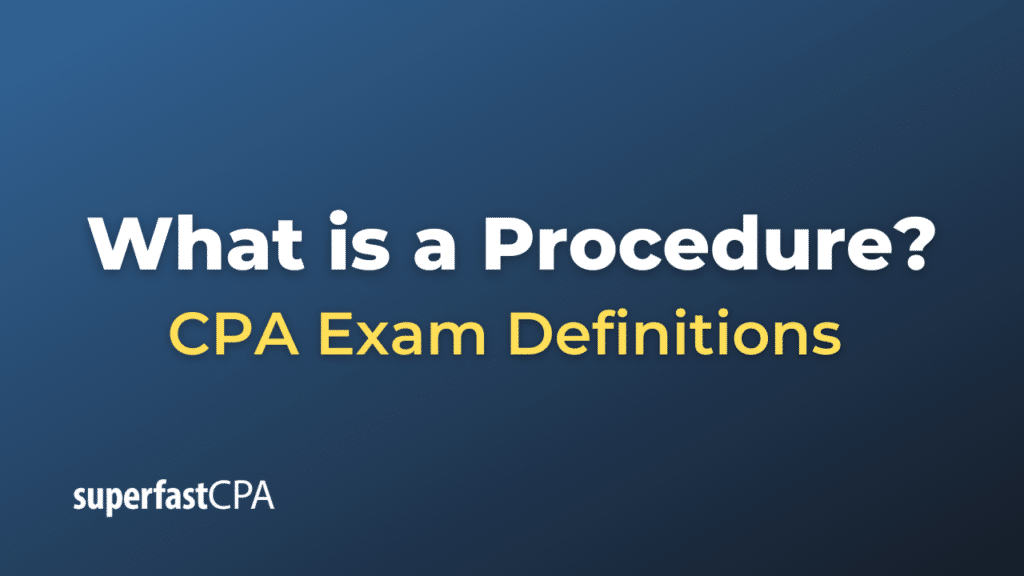Procedure
A procedure is a specific way of performing a task or a set of tasks. It’s a series of actions conducted in a certain order or manner. In a business context, procedures are often documented and used as a guide to standardize processes, improve efficiency, and ensure consistency in the quality of outcomes.
For example, a company might have a procedure for processing customer orders, which might include steps like receiving the order, checking the availability of the ordered items, packaging the items, and shipping the order. By following the procedure, employees can ensure they handle all orders in the same way, reducing the chance of mistakes or oversights.
Similarly, in a medical context, a procedure could refer to a series of steps that healthcare professionals follow when diagnosing a disease or performing a surgery.
Procedures are fundamental in various fields and sectors such as technology, manufacturing, healthcare, finance, and more. They help in maintaining safety standards, meeting regulatory requirements, and managing complex operations.
Example of a Procedure
Let’s consider a customer service scenario in a telecommunications company. The company may have a documented procedure for handling customer complaints about service disruptions. Here’s how this procedure might look:
- Receipt of Complaint: The procedure starts when a customer service representative (CSR) receives a complaint from a customer about a service disruption.
- Log the Complaint: The CSR logs the complaint into the customer relationship management (CRM) system, detailing the nature of the complaint and any relevant customer information.
- Assessment: The CSR assesses the issue based on the information provided by the customer. They might check the customer’s account details, service plan, or previous complaint history.
- Problem-solving: The CSR follows a troubleshooting guide to try and resolve the issue. This might involve asking the customer to perform certain actions, checking the status of local network infrastructure, or escalating the issue to a technical specialist.
- Resolution and Follow-up: If the issue is resolved, the CSR documents the solution in the CRM system, informs the customer, and closes the complaint. If the issue cannot be resolved immediately, the CSR informs the customer about the next steps, who will be following up, and the expected timeline.
- Feedback: After the resolution of the issue, the customer is asked to provide feedback on how their complaint was handled.
This procedure ensures that every customer complaint is handled in a consistent and efficient manner, leading to better customer service and more satisfied customers. It also makes training new employees easier because they can follow the established procedure.













